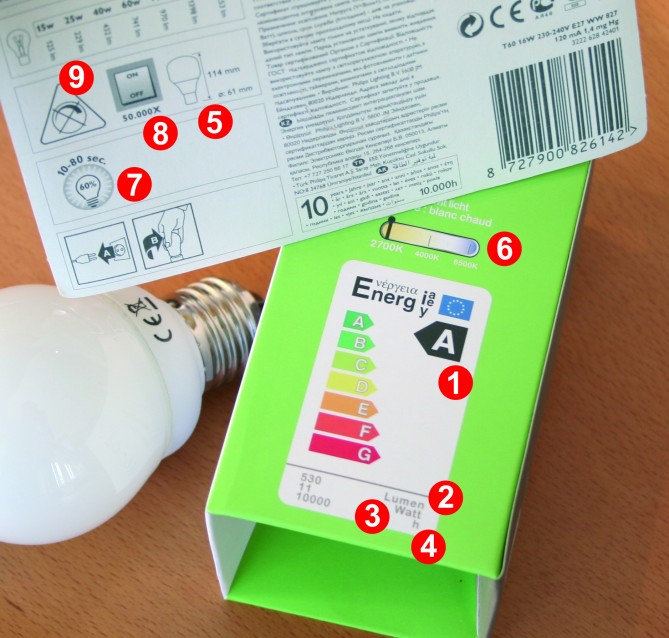

From now on the packaging of all light bulbs has to include an “energy label”. This label indicates the following properties of the bulb:
The packaging also provides other useful information about the light bulb, such as its size, the colour of the light, its start time, etc
Initially, the energy label was introduced by the European Union to classify household electrical appliances. Today it is used in more and more fields: electric light bulbs, television sets, buildings (EPB certificate) , cars, etc. The aim is to enable you to give preference to appliances that use less energy and that will cost less during their lifespan.

The most visible information, because of its large lettering and the grading of the colours, is the energy class of the bulb. The best bulbs are those in class A, the least good in class G. In other words: A-class bulbs are the most efficient because they use less energy than the others to supply the same amount of light.
Typically, light bulbs are devided into categories (1):
Beneath the energy category, you will see three figures and three units:
In addition to the energy label, the light bulb packaging includes other information that will help you choose:
While the energy label tells you about the energy performance of the light bulb you have bought, it does not say anything about its impact on the environment. You will find out a little more by checking whether the bulb carries an ecolabel (a blue and green flower with star-shaped petals).
This European label guarantees products that have less of an impact on the environment and which are safe and reliable to use. N.B.: This labelling is voluntary, which means that the product fulfils the ecological criteria set but is not necessarily the most environmentally friendly on the market (other products that do not carry the label may be equally or even more environmentally friendly).
Subscribe to our newsletter and stay informed about energyfacts.